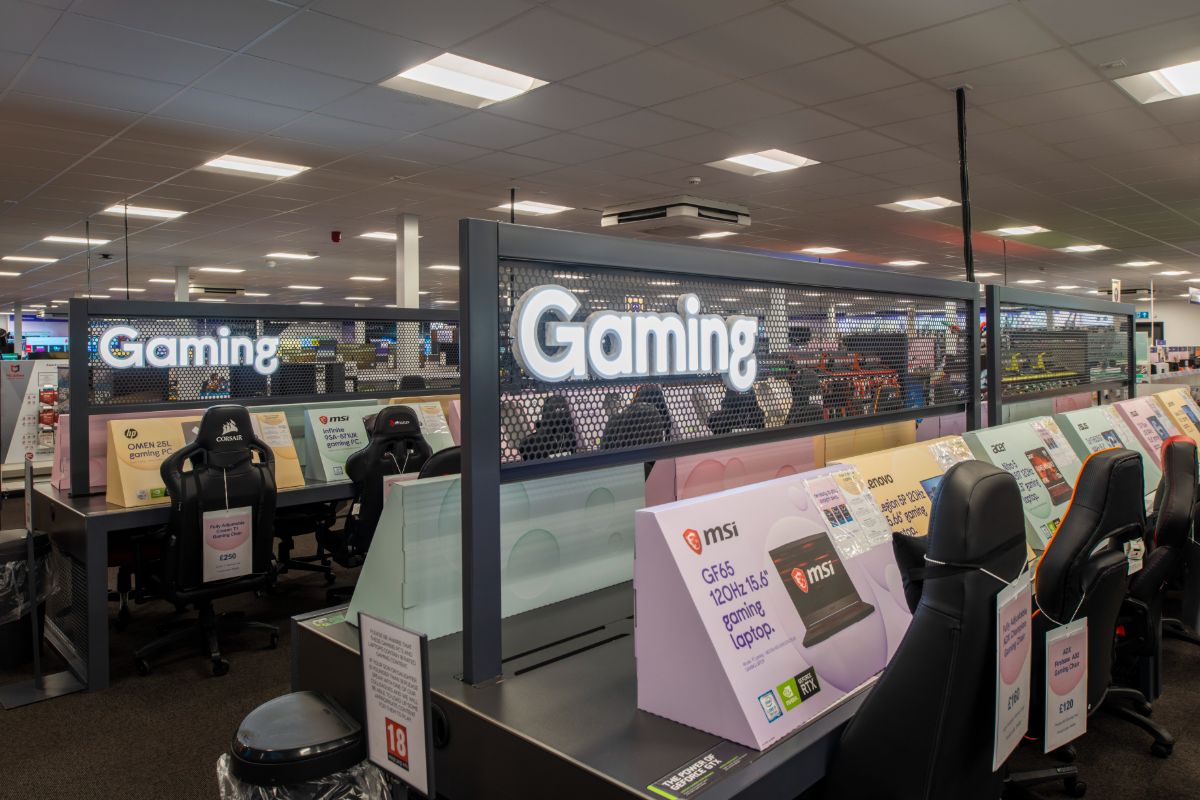At the heart of IRX 2013 was a wide-ranging and varied conference programme. We report direct from the show, bringing a flavour of some of the key themes that were top of mind for both speakers and visitors.
The talk of IRX 2013 was of the rise and rise of mobile, the joining of online with in-store to produce the new IRIS (internet retailing in-store) style of commerce, the importance – and difficulties – of international trade, and of getting delivery right.
These were the themes explored in across the conference’s learning zone, in the 12 workshops, the six conferences as well as in the Innovation TV Studio.
They were not, of course, the only themes: as the lines to see Dressipi’s Sarah McVittie in The Customer Journey conference demonstrated, the practical use of Big Data was an area of much interest.
But they were ones that speakers turned to again and again as they debated, advised and shared their experiences of what it means to be an online or multichannel retailer in 2013 at this industry forum.
SoLoMo and more
Paul Skeldon, who chaired the SoLoMo conference, focused on social, local and mobile, in his account of themes that emerged from that event, available here.
Operating on the logistics
A year ago, Saeed Anslow, development director (home shopping) at Asda, told the IRX Operations and Logistics conference, he had just one delivery option for his online food shopping, as an Asda customer. That was home shopping. Today there are six potential collection points near to his home. For in the last year the company has rolled out its grocery Click and Collect service to 100 collection points, and plans to have at least 200, but very possibly more, by the end of the year. They’re not only at Asda stores of all stripes – there are three at its petrol filling points, its first collection point in a business park opened in December (in Reading) and its first Park & Ride collection point opens in Nottingham next month, while ordering for same day collection will also be launched later this year. That will enable, says Anslow, a step change in service. “This is where true convenience comes about,” he told IRX. “You can park your car, place your order on the bus into town and then collect it in the evening.”
The first drive through Click and Collect for groceries launches next month, while fresh innovations scheduled for the next year are set to include unmanned collection, through locker deliveries, and in-store price comparison. “We have been doing home shopping for 15 years,” said Anslow, “and we expect more changes in the next five years than we have in the previous 15, especially with Click and Collect. We don’t see any reason why in five years time collection won’t be as big as home delivery.”
Some interesting points on the same subject also emerged from the Future of Logistics panel in the same theatre. Useful points included the use of social media for logistics. As well as the Royal Mail’s Twitter account winning praise, it also emerged that ByBox successfully crowdsourced locations for its locker bank expansion programme. While Elgin, in Scotland, seemed an unlikely location, it has proved the company’s eighth most popular site, thanks to the popularity of online shopping in an area with something of a dearth of shops.
Louis Agabani, of MyHigh.St, closed his account of the logistical challenges experienced by the marketplace’s 172 retailers with a call to action. Having established that traditional logistics do not work well for smaller retailers who individually account for small volumes of parcels, and find it hard to leave the shop to send the post, but together form a force to be reckoned with, MyHigh.St is currently trialling its own solutions as it looks for cost-effective alternatives. These range from using a local pub as a hub for parcel collections, a butcher’s van to share deliveries in Wells, cycle couriers for same-day delivery in Bristol to a trial of ByBox lockers. The idea of using a van to collect deliveries from along the high street and take them to a courier’s depot is also in the mix. But Agabani wants to do more: “You can’t ignore the fact that locally sourced, interesting products are going to be key to the way that retail is developing. There is an opportunity. There are more than 150,000 independent retailers in the UK, a market of £150bn employing 1 in 10 retail staff. There is a great commercial opportunity for any company with a vision to support small retailers and their needs.”
Online to store
The use of digital technology in stores is such a key emerging phenomenon that it merited its own zone at IRX 2013. As well as holding sway on the expo floor, sessions in the IRIS conference considered the rise of the digital store from a variety of angles.
IJoanna Robb, head of multichannel development and strategy, B&Q, spoke about the DIY retailers’ Darwin Project through which it is transforming the business through new operational models and systems and changing the way it sells. Benefit will arrive from “range, loyalty of repeat visitors and valid mobile offering and call centre selling,” she said.
At the foundation, said Robb, is how the business manages customer and product data. Building on this is the omnichannel platform through which it will reap rewards from future growth. Splitting the front end into customer and colleague projects means the business can work to a multidevice strategy for customers and extract data from existing desktop systems to tablets and kiosks for use by colleagues in store.
Robb told delegates that upcoming launches include an imminent TradePoint ecommerce offering and pay and collect functionality for its main diy.com site.
She advised others going through business change to:
1. Cement your core purpose and keep a clear vision for the programme
2. Suffer not the fools: “There’s a lot of talent out there so take the time to find those expert”
3. Stay flexible so that you can respond to changes. She cited the rise of mobile since the inception of the Darwin Project.
4. Deep impact – omnichannel changes the entire business so don’t underestimate how it will affect everyone. “It’s about culture change not training manuals.”
5. Be pragmatic – this programme will never end since the evolution of retail has no end.
Kieran Clinton-Tarestad, head of ecommerce at Gant UK , raised the issue of brands becoming retailers and retailers becoming brands in a speech that highlighted the challenges that ecommerce is bringing to relationships between manufacturers, retailers, subsidiaries, franchisees, across own store networks and territories. In the future, “brands will take back control of their distribution centrally,” he told delegates, adding that the brand is about to launch a pick up in store service with John Lewis. “Customers don’t see the difference between Gant and Gant sold in John Lewis,” he told delegates.
“Manufacturers are the last people to go direct to consumers,” said David Williams, head of online, EMEA, Deckers Outdoor, who also spoke about channel conflict for manufacturers. He advised other brands to revisit their distribution channels and ask what value are others adding to you, what makes your experience unique and significantly to “change your own mindset.”
The IRIS theme of the digital store was also singled out as a key trend for this year and next in the 13 trends for 2013 session. There, Siobhán Géhin of Kurt Salmon pointed to a fast-moving rise in expectations. “Both as a shopper and a professional,” she said, “I find it so frustrating when I go into a store and can’t have something right now.”
Delivering on international
The growth of cross-border trade within the EU has been a key trend in 2013, and it presents a range of challenges. As well as starring in its own conference stream at IRX, international trade also featured elsewhere. The appearance of Chinese search gaint Baidu’s European partners Jonny Zhu, of CharmClick and, for the UK and Ireland, Sri Sharma of Net Media Planet in the Online Merchandising and Selling conference drew an interested audience with plenty of questions.
The theme was also a key one for the 13 trends for 2013 panel. As Kurt Salmon’s Géhin pointed out: “Going international used to be such a big decision because it involved bricks and mortar.” Today online is a great option, she said, for retailers of goods from fashion to soft goods, where delivery costs are low.
The importance of being able to communicate effectively with new international audiences was at the forefront for the panel. As Stephen Lepitak, news editor of The Drum, pointed out: “A lot of people create international ecommerce just by looking at who is buying from their brand. But that means you are just finding people who know you, and who live somewhere else. But people buying from M&S from the Costa Brava doesn’t make it a Spanish brand. Unless you are able to communicate effectively with customers in another market you will fail.”
Small surprise, then, said Walter Blackwood, logistics manager at Mothercare, that: “Most of the [international] ecommerce growth is going to the English-speaking world, America, Canada, and other countries. It is not going to the other parts of the world, except for high-level brands.” He added: “It is the fact that we have the English language that means we can enter most markets easily, as well as a very advanced level of skill when it comes to ecommerce which is by no means universal.
“The cost of delivering overseas is relatively cheap, and it’s relatively easy to migrate across borders.”
Sadly, Internet Retailing’s web team was not able to be in all of the many and varied sessions at IRX 2013, in which more than 100 speakers took part. However, our AV team was there and has recorded all of the presentations at IRX 2013. Most will be available in coming weeks to view and review on our Internet Retailing Expo site, www.internetretailingexpo.com.








